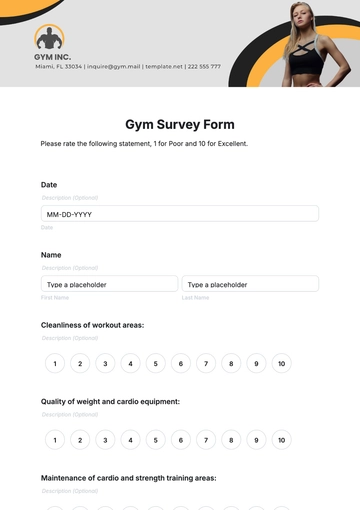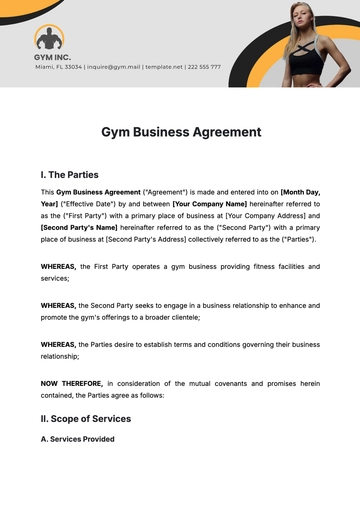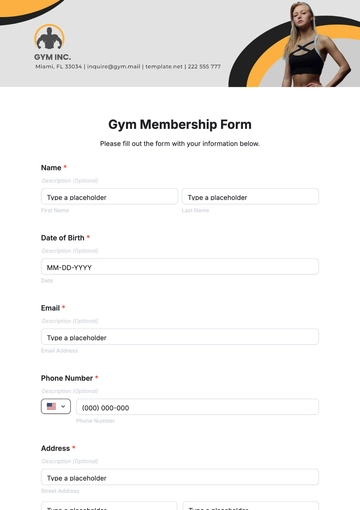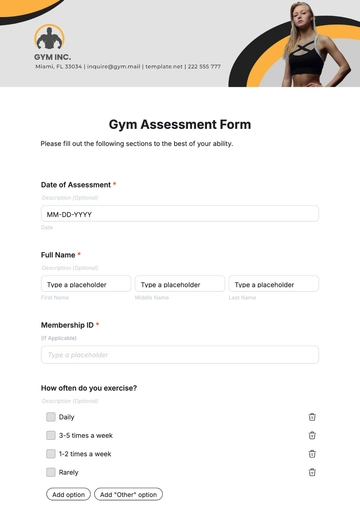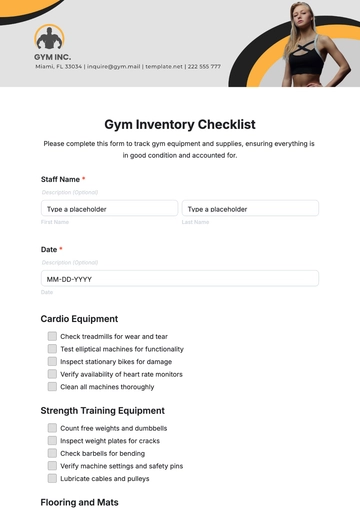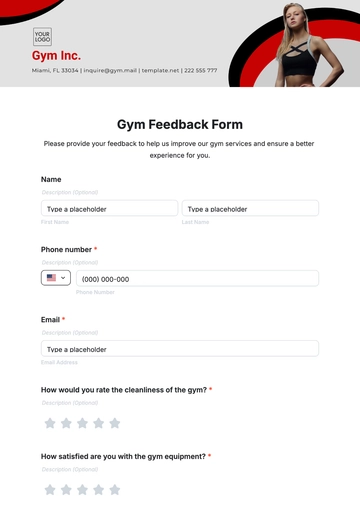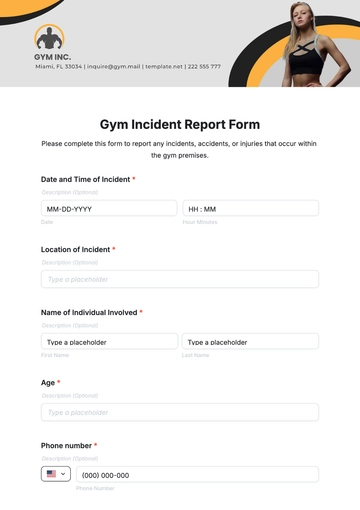GYM MARKETING CASE STUDY
This case study was conducted by [YOUR NAME] from [YOUR DEPARTMENT] at [YOUR COMPANY NAME]. The focus is on a series of targeted marketing strategies devised to boost new memberships, enhance member retention, and elevate brand visibility for a fitness center.
I. Executive Summary
The main goal of this case study is to analyze and summarize the successes and challenges of the marketing campaign designed to increase the gym's membership base. The strategy incorporated a mix of digital marketing, community events, and referral programs to achieve these goals. Metrics of success included membership growth rate, member satisfaction, and return on marketing investment.
II. Background
At the onset of the campaign, [YOUR COMPANY NAME] observed a stagnation in new gym membership sign-ups and a slight decline in existing member retention rates. To address these challenges, a multifaceted marketing approach was designed to target potential new members while keeping existing members motivated and engaged.
III. Objectives
The primary objectives identified for the campaign were:
Increase overall gym memberships by 20% within a six-month timeframe.
Enhance member retention by improving engagement through personalized membership plans.
Grow brand awareness within the local community and on social media platforms.
Secondary objectives included establishing partnerships with local businesses and wellness brands to offer co-marketing benefits, therefore enhancing the value provided to gym members.
IV. Marketing Strategies Employed
To reach the outlined objectives, the marketing team implemented the following strategies:
Launch of a new digital marketing campaign focusing on paid social media advertisements and targeted email marketing.
Organization of monthly community events open for both members and non-members to promote the gym’s community-centric approach.
Introduction of a referral program rewarding existing members for bringing new members.
Each strategy was monitored and analyzed to evaluate its effectiveness, using both qualitative feedback from members and quantitative data such as attendance rates, website traffic, and new sign-ups.
V. Results and Analysis
By the conclusion of the campaign, [YOUR COMPANY NAME] reported a 25% increase in new memberships, surpassing the initial target. The referral program turned out to be particularly influential, accounting for 40% of new memberships.
Membership retention rates also improved by 15%, attributed largely to the revamped personalization of the membership plans and the engaging community events that were well-received.
VI. Lessons Learned and Recommendations
Reflecting on the campaign, several key lessons were learned:
Effective segmentation of the target audience significantly enhanced the impact of digital marketing efforts.
Community events were instrumental in both retaining current members and attracting new ones.
Continual adaptation of marketing messages based on member feedback and engagement metrics is crucial.
Based on these insights, it is recommended for future campaigns to leverage data-driven customization of marketing techniques and to further integrate member feedback into strategic planning. Also, a continual focus on community-building initiatives can further enhance both new member acquisition and current member satisfaction.
Prepared By:
[Your Name]
[YOUR POSITION]
[YOUR DEPARTMENT]
Contact Details:
[Your Email]
[Your Company Number]
[Your Company Website]
[Your Company Address]
Case Study Templates @ Template.net




